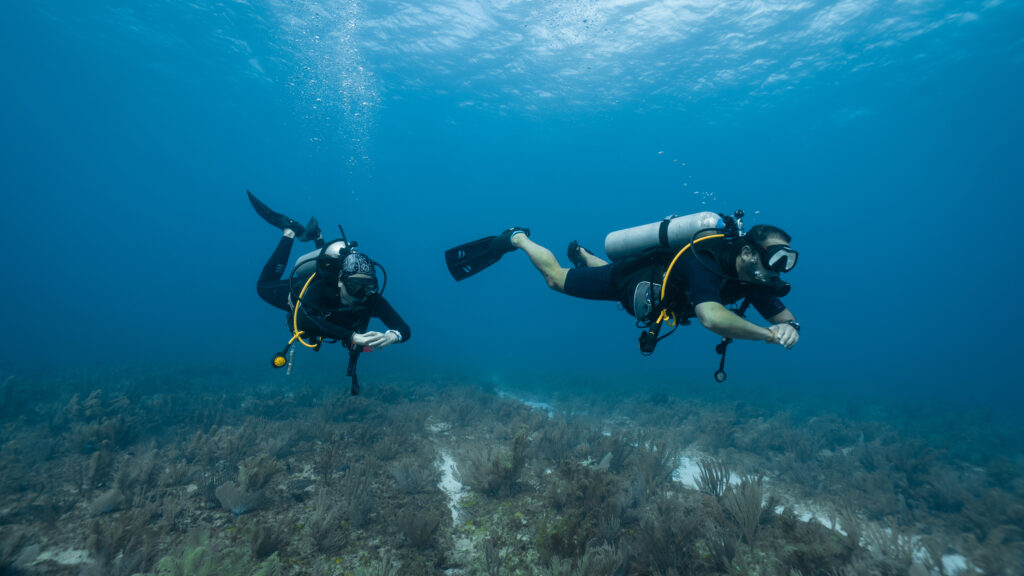Destinations

Diving Destinations in Africa Diving Destinations in Asia Diving Destinations in Europe Diving Destinations in Oceania Diving Destinations in North America Diving Destinations in South America
What is Scuba Diving?

Scuba diving is a recreational and professional activity where individuals explore underwater environments using self-contained underwater breathing apparatus (SCUBA) equipment. This equipment allows divers to stay underwater for extended periods, enabling them to experience marine life, shipwrecks, caves, and other submerged wonders. The ability to explore these otherwise inaccessible areas has made scuba diving a popular pursuit for adventure enthusiasts, marine biologists, and professional divers alike. Since its modern development in the 20th century, scuba diving has attracted millions of people globally, offering a unique blend of excitement, discovery, and tranquility beneath the waves.
What is a Dive Flag?

A dive flag is a crucial piece of safety equipment used in scuba diving to signal the presence of divers in the water to nearby boats and other watercraft. It is typically a brightly colored flag that can be easily seen from a distance, usually featuring a red background with a white diagonal stripe or a blue-and-white Alpha flag. The primary purpose of the dive flag is to prevent accidents by informing others in the vicinity that divers are below the surface, thus promoting safe diving practices and reducing the risk of injury or fatality. Understanding the use and significance of the dive flag is essential for both divers and boaters to ensure a safe and enjoyable experience in the water.
What is No Mount Diving?

No mount diving is a specialized form of scuba diving that involves the diver carrying tanks and equipment separately from their body, usually holding or towing them instead of mounting them on a harness or backplate. This technique provides exceptional flexibility and maneuverability, particularly in environments that are too restrictive for traditional scuba gear setups. Originating from the need to navigate through tight underwater spaces, no mount diving has become a valuable technique in underwater exploration and technical diving circles, especially among cave divers and those exploring complex underwater structures.
What is Recreational Scuba Diving?

Recreational scuba diving is a popular underwater activity enjoyed by millions of people around the world. It allows individuals to experience the underwater environment firsthand, encountering marine life and underwater landscapes that are typically inaccessible. Unlike commercial or military diving, which focuses on tasks such as underwater construction or defense, recreational scuba diving is primarily for enjoyment and adventure. It involves using a self-contained underwater breathing apparatus (scuba) to breathe underwater, enabling divers to spend extended periods submerged. This activity has grown significantly in popularity due to its appeal to adventurers and nature enthusiasts alike.
What is Traverse in Scuba Diving?

What is Traverse in Scuba Diving? A ‘traverse’ in the context of scuba diving refers to the act of passing through an underwater cave, tunnel, or a passageway by entering at one point and exiting at another. This maneuver is both exhilarating and challenging, requiring a mastery of various diving skills, an understanding of the […]
